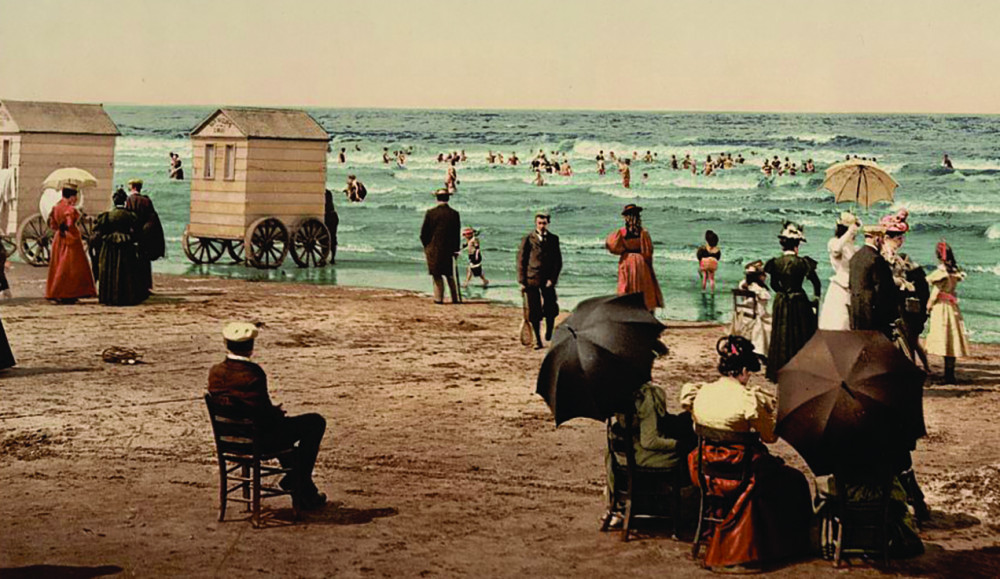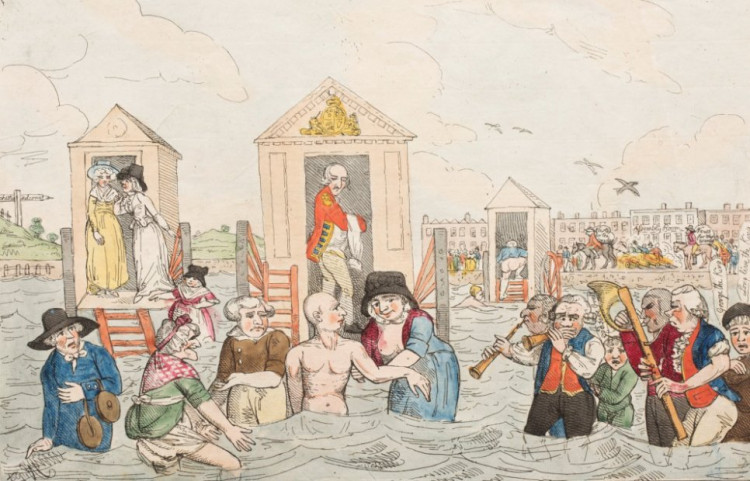Days of sea monster fears and sunbathing huts remembered
By Nub News Reporter 28th May 2025
By Nub News Reporter 28th May 2025

MEMBERS of Thurrock Local History Society and guests were treated to a talk about the origins of a popular activity at their meeting this month (May).
Dr Emma Cannell, who works with Essex Gardens Trust, spoke on 'A dip into the history of sea bathing in Southend'.
It was a return visit by Dr Cannell to the society and listeners got an insight into how sea bathing was popularised at Southend.
In the 17th and 18th centuries people used water therapies; the sea was regarded as dangerous, Neptune requiring appeasement, sacrifices being made to him.
There was a fear of the sea - mediaeval monsters and legends like the Kracken. Also the coast was the entry place for invaders and plague was brought by sea.
By the end of the 18th century attitudes had changed. Oceans were deemed far safer, with larger ships. It was the Age of Enlightenment when natural history was studied, encouraging the collection of fossils etc.
Crowded urban living caused health problems and cold water bathing was promoted. It was the age of spas such as Bath, said to cure gout etc. Sea bathing was also recommended, promoted firstly at Scarborough in the late 17th century.
Bathing machines were invented in the mid-17th century, when there was horse racing on the beach and drinking seawater was promoted. By the mid-18th century diseases were said to be cured by the sea, washing away all the evils of mankind.

George III was recommended to try sea bathing at Weymouth and the band in the next bathing machine to his played God Save the King when he entered the water!
Southend started as group of fishing huts at the south end of Prittlewell. In 1768 a journal described development – a convenient place for bathing with 35 acres to build houses, library, shops etc. attracting visitors. But the benefits were not accepted by all and the building for therapy was not built, due to the economic downturn, and the estate was sold.
In 1793 the Grand Hotel opened. 1801 Princess Charlotte stayed in the town when she was a girl. Her mother the Princess of Wales had visited in 1894, their visits being a huge bonus to the resort. Lady Hamilton also visited, maybe Nelson too.
There are links with Jane Austen and Emma. Southend was a popular destination for naval families; the sea air considered an appetite stimulant. The circulating library was used by women who met friends there, maybe some retail therapy as well. A theatre opened in 1806 with a summer season, maybe the inspiration for Sanditon. The Globe newspaper published lists of visitors to town, promoting a respectable seaside resort.
Originally bathers were naked, bathing machines offering some privacy. In 1750 they had a canvas awning, protecting their modesty. A 'dipper' held customers and then dipped them if they couldn't swim. Between 6am-9pm bathing was prohibited unless in a bathing machine, owners of which had to have a licence. In the Victorian period hired swimming costumes became popular and the machines were no longer needed. Granville wrote brochures, showing where to stay etc.

Thomas Ingam also promoted bathing for health. In 1869 he constructed a floating iron bath, operating regardless of the tide. Entrance was 6d, with costume extra. The licence cost increased considerably and it was sold to the Absolom family. In WW1 the bath was towed to Chalkwell beach, destroyed after the war.
Southend was served by stagecoach, also by paddle steamers. Rowing boats took passengers off and some offered piggy backs to the shore. In 1828 there was a meeting at the Royal Hotel to discuss the construction of a pier, 600ft long, opened in the 1830s. In 1873 the wooden pier was considered unsafe, a new iron one being built in 1899 at a cost of £70,000, paid for by subscription, shares and tolls. There were horse-drawn carriages to take day trippers to the end. It has been extended several times and is now the longest pier in Europe at 1.3 miles.
The society's Norma Leached thanked Dr Emma Cannell, saying: "This was a nostalgic trip to Southend, Emma showing how development came about, resulting in the resort we see today.
"This was the last meeting of our season, lectures starting again in September. Meantime why not come and see us at the Horndon Feast and Fayre on 28/29 June or the Orsett Show on 6 September."
CHECK OUT OUR Jobs Section HERE!
thurrock vacancies updated hourly!
Click here to see more: thurrock jobs
Share:
















